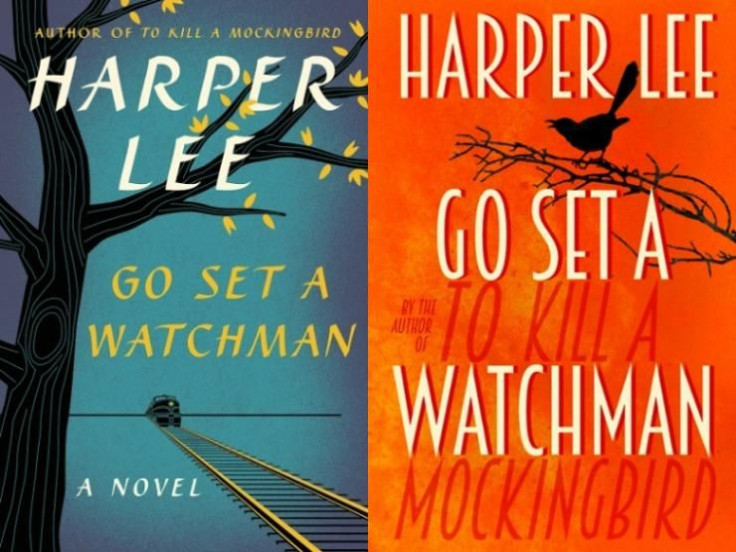Racist Atticus Finch In 'Go Set A Watchman': Scholars Predict Shift In How Harper Lee's Classic Will Be Taught

Now that Harper Lee's "Go Set a Watchman" is out and readers have shared their shocked reactions to the recasting of Atticus Finch, the heroic lawyer representating an unfairly accused black defendant in "To Kill a Mockingbird," as a bigot, it raises questions about how the classic will be reassessed and taught.
"I have no doubt that 'Mockingbird' will continue to be taught in middle schools and high schools throughout the country, and rightly so," Amy Clukey, assistant professor of English at the University of Louisville where she works on global modernism and southern studies, told International Business Times. "It's still an important book about coming-of-age in the Jim Crow South."
Although revelations that Atticus Finch is a bigot in "Watchman" had fans of "Mockingbird" clutching their pearls -- with some even claiming that they refused to read the book -- many Southern literary scholars think it adds a more complex and realistic dimension to the character.
Joseph Crespino, professor of history at Emory University and author of "Strom Thurmond's America" told IBTimes that although he loved both "To Kill a Mockingbird" and the figure of Atticus Finch when he read it in school, he grew dissatisfied with the way that the broader culture embraced him uncritically.
"It’s been remarkable summer. In some ways, you see these two kinds of mythical figures or icons of Southern culture and history being reinvestigated," Crespino said. "The Confederate flag on the one hand, on the right; and the figure of the quintessential southern liberal Atticus Finch on the left. They’re both being reinvestigated and knocked down a peg in an interesting way."
This is echoed by John Matthews, professor of English at Boston University, who said that Lee’s book as central to the canon doesn’t signal universal admiration. Critics like Toni Morrison balk at its "white savior" narrative, Matthews said, "one that puts all the responsibility for achieving racial equality in the hands of the perpetrating race." But he adds, "I'd hope Atticus's later racism would stimulate discussion of how individual attitudes or moral action might not be adequate to addressing systemic social injustice, invite questions about a presumed reliance on white people as the primary agents of black civil rights, and the absence in 'Mockingbird' of any notice of black activism in the 30s."
Challenging Fiction
On the 50th anniversary of the publication of "To Kill a Mockingbird" in 2010, writer Charles McNair proposed a slightly unorthodox question: Does Harper Lee's classic about heroic lawyer Atticus Finch during the segregated 1930s South make readers feel too comfortable to be critical about their own relation to race? He asked,"Isn’t there room for other points of view – less comfortable, more challenging – in fiction?”
Little did McNair know that in five years – a less comfortable, more challenging work of fiction would emerge from Harper Lee herself in the form of "Mockingbird's" repressed original, "Go Set a Watchman," a work that her editor at Lippincott, Tay Hohoff, helped to transform into the decades-long best-seller.
In Lee's original version, a 26-year-old Jean Louise Finch (the adult Scout) returns to Maycombe, Alabama -- and from the repressed archives -- to find her beloved father a bigot, attending meetings with other bigots. She also learns that he served as a lawyer for black defendants for fear that if he didn't, the NAACP would arrive and begin meddling into town politics.
Learning From 'Watchman'
Lee's "new" novel "brings a moral and political complexity to Atticus Finch that is overdue,"wrote Crespino in an op-ed piece published in the New York Times Thursday called "Atticus Finch Offers a Lesson In Southern Politics." He argues that the "Watchman" Atticus Finch's shift in thinking toward a more bigoted view matches with the shift that took place among Southern democrats turned Republican in the 1950s.
"I would love to read and think about these books together, thinking about Southern history and civil rights history," Crespino told IBTimes. "The subtle aspects of Southern politics in the Jim Crow era that were missing in 'Mockingbird.' The relationship between Jean Louise and Calpernia, the African American domestic servant that the family employed, is interesting and something you don’t get at all in 'Mockingbird.' "
“By the end of 'Watchman,' Jean Louise is too browbeaten to continue challenging the virulent racism that she discovers in her own family, so she drops the subject,” Amy Clukey told IBTimes. "We don't have that option anymore, so we need to learn from her failure."
A New Conversation
Some educators avoided teaching "Mockingbird" precisely for its idealized view of whites in power. " 'To Kill a Mockingbird' was a novel that emphasized a 'white savior' as the ideal for responding to racial injustice in the South, and I find that that's not representative of the civil rights struggles in the South, and that was not a particularly nuanced portrayal of Southern identity," said Elizabeth Steeby, associate professor of English at the University of New Orleans who teaches courses on southern literature, New Orleans literature, and gender and sexuality.
As for "Watchman" and a more complex and bigoted Atticus Finch -- would that change her wariness about teaching Harper Lee? Steeby prefaces her answer by saying that there is resistance to this "new" Atticus Finch because of our attachment to the stories we tell about ourselves, and particularly a tendancy to want to hold onto better versions of ourselves.
"But I think one of the most important things to do is steer the conversation away from these central white figures, and to give privilege to the stories that center around people of color and black people's struggles," Steeby said. "We should interrogate investments in whiteness and investments in white nostalgia, whether it's for a liberal character or for the Confederate flag. I think they're two sides of the same coin."
© Copyright IBTimes 2025. All rights reserved.






















